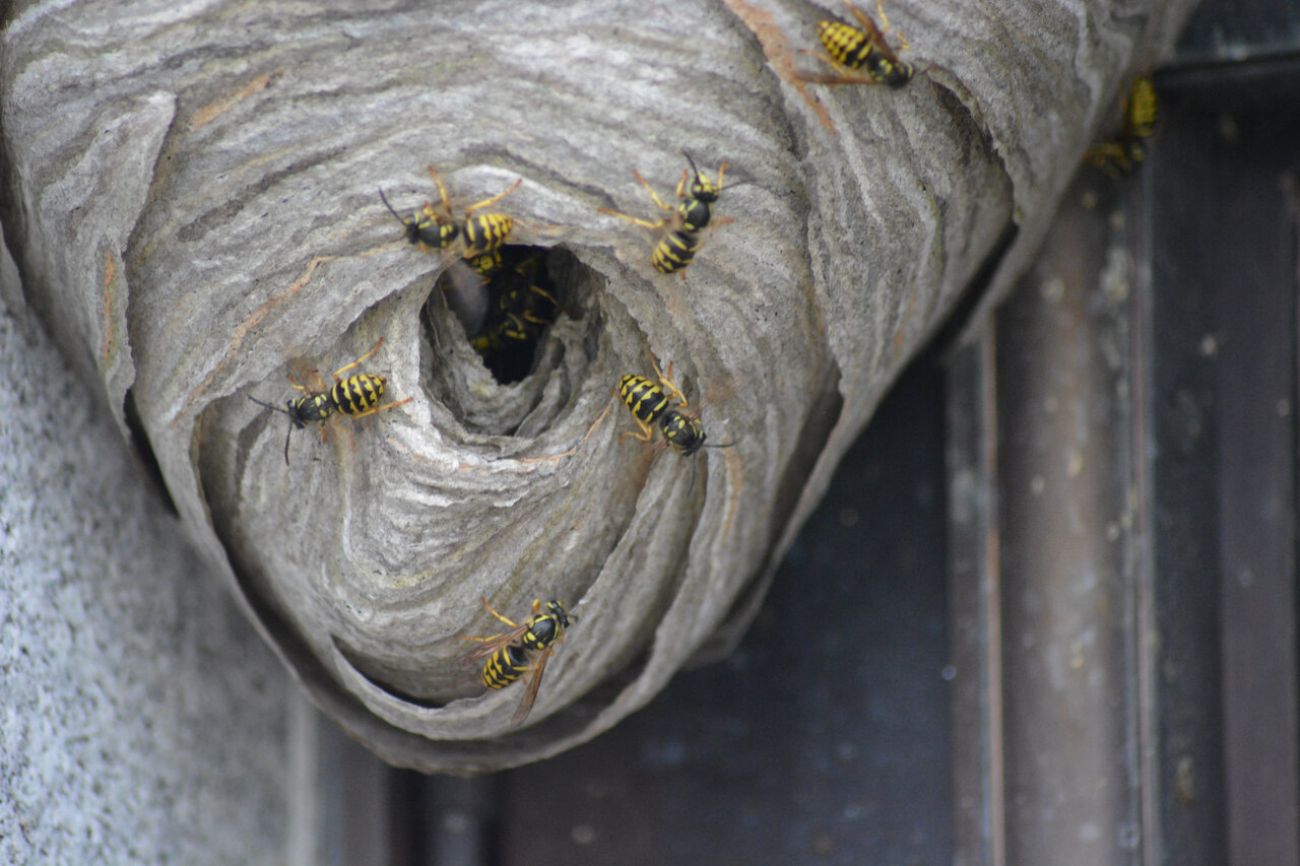It’s peak yellowjacket season in Michigan, and they’re as mean as ever

- Happy September. Yellowjackets are angry, protecting their colonies and ready to attack
- They are more likely to sting after developing a sweet tooth in August
- Sprays work, but it’s best to use them in the mornings or evenings
It’s September, and that means yellowjackets are at their peak in Michigan.
They may look like bees, but the vicious insect has no qualms about attacking.
“This is the time of year when the colonies are at their maximum size,” said Howard Russell, entomologist at Michigan State University.
“It's also the time of year when they're most aggressive and intolerant.”
Related:
- What's being done about plastic trash getting into the Great Lakes?
- The life of Peanut: Inside the story of the world’s oldest living chicken
- Control for frog-bit and water soldiers
In August and September, yellowjackets become feistier as they are protecting their colonies. They typically nest underground, but colonies of up to 5,000 can also be found in trees, shrubs, wood piles and houses.
Yellowjackets are beneficial because they eat caterpillars and flies, but become nasty in late August or September as they develop a “sweet tooth” for sugary foods like candy, ice cream, pop and other beverages, Russell said.
James Lee, president of Sustainable Beekeepers Guild of Michigan, said he gets about 25 to 50 calls per day from homeowners about the pests.
His advice: Leave them alone and “give them plenty of space.”
Here’s what you need to know:
Why now?
Yellowjackets typically only live 12 to 22 days. They spend their lives building papier-mâché like colonies from their saliva and chewed wood.
Work starts in May and peaks around August, when the last set of wasps, including next year’s queen, are raised and the colony is mature
By November or December, all yellowjackets die except for the queen, who hibernates through the winter, lays eggs and begins the cycle anew.
While yellowjackets look like bees, they don’t die after they sting and can attack multiple times.
Their venom is much more potent. For most, a bumblebee sting is a slight pinch that can leave a rash but heals quickly. Yellowjacket stings can cause intense pain for hours followed by swelling and itching for the next few days.
“Bees are pollinators, and they're considered to be beneficial in the fact that they pollinate our plants and help us with growing fruit and vegetables,” Russell said. “Yellowjackets aren't pollinators, they're predators.”
How to protect yourself
If a yellowjacket is near, be still and wait until it flies away. Swatting them will cause them to become more agitated, which may result in one or more stings, Lee said.
Stepping on them will cause more harm because when they die, yellowjackets release an odor that will attract more wasps. Their only intent is to attack, Lee said.
Since most colonies can be found underground, the best way to get rid of the wasps is by using insecticide dust. Yellowjacket traps can be found in hardware stores, but they can also be made by using an old pop bottle and a few pieces of meat as bait. Spraying nests in evenings or early mornings is also effective.
“If you want to avoid them making nests near your home or your picnic area, your barbecue space, the best thing to do is set out yellowjacket traps in the spring to catch the queen's before they make a nest in your home area,” said Lee, who also owns Lee’s Bees in Romulus.
Michigan Environment Watch
Michigan Environment Watch examines how public policy, industry, and other factors interact with the state’s trove of natural resources.
- See full coverage
- Subscribe
- Share tips and questions with Bridge environment reporter Kelly House
Michigan Environment Watch is made possible by generous financial support from:
Our generous Environment Watch underwriters encourage Bridge Michigan readers to also support civic journalism by becoming Bridge members. Please consider joining today.
See what new members are saying about why they donated to Bridge Michigan:
- “In order for this information to be accurate and unbiased it must be underwritten by its readers, not by special interests.” - Larry S.
- “Not many other media sources report on the topics Bridge does.” - Susan B.
- “Your journalism is outstanding and rare these days.” - Mark S.
If you want to ensure the future of nonpartisan, nonprofit Michigan journalism, please become a member today. You, too, will be asked why you donated and maybe we'll feature your quote next time!






